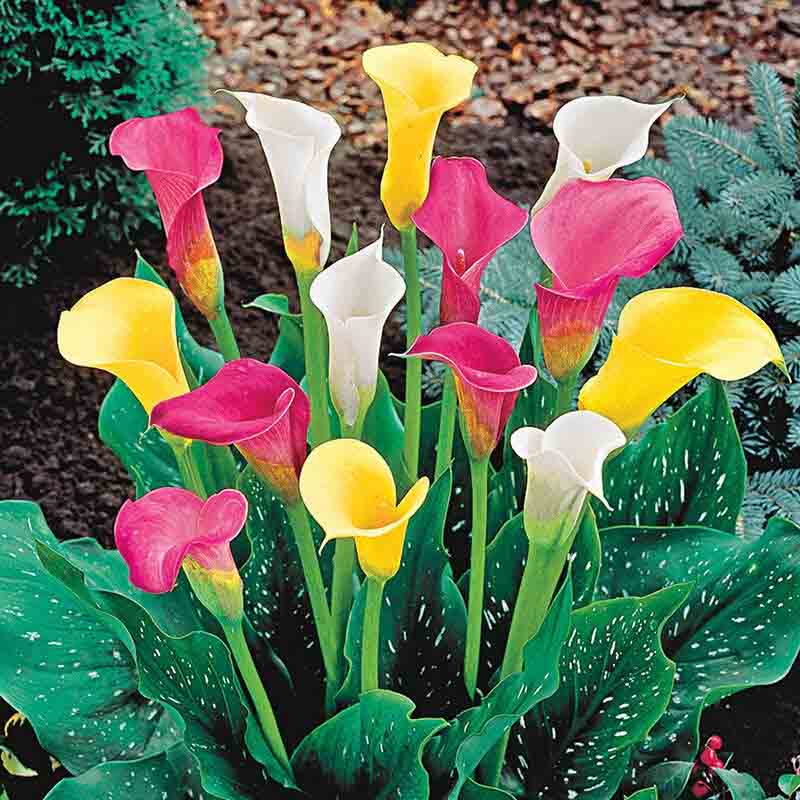Calla lily Profile
Written by admin
Sep 11 2021

Calla lily is a perennial thick herb belonging to the class of monocots, Araceae, and Zantedeschia. It has tubers and is easy to tiller to form clusters. The leaves are basal, and the lower part of the leaf is sheathed; the leaves are thicker, green, heart-shaped arrow-shaped or arrow-shaped, the apex is sharp, acuminate or tail-shaped, and the base is heart-shaped or halberd. It likes loose, fertile, and humus-rich clay loam.
Calla lily morphological characteristicsCalla lily efficacy and roleThe medicinal value of calla lilyThe ornamental value of calla lilyCalla lily growth habit and growing environment and distributionCalla lily cultivationPotted plants
Calla lily is poisonous. It contains a lot of herbal calcium crystals and alkaloids. Ingestion can cause drowsiness and other poisoning symptoms. This species is a non-toxic plant included in the Chinese Plant Atlas Database, and its toxicity is that of tubers, buds and fleshy inflorescences. Chewing a small tuber can cause a sore tongue and throat. Calla lily can be used medicinally and has the effect of clearing away heat and detoxifying. Calla lily is poisonous and is contraindicated for oral administration.Calla lilies are commonly used in bridal bouquets in European and American countries. It is also the national flower of Ethiopia.
Calla lily morphological characteristics
Calla lily is a thick perennial herb with tubers. The leaf is basal, the petiole is 0.4-1 m long, and the lower part is sheathed; the leaf is thick, green, heart-shaped arrow-shaped or arrow-shaped, the apex is acute, acuminate or caudate, the base of the calla lily is heart-shaped or halberd, entire, It is 15-45 cm long, 10-25 cm wide, without plaque, and the posterior lobes are 6-7 cm long. The stalk of the calla lily is 40-50 cm long and smooth.The buds of calla lilies are 10-25 cm long, with short tubes and yellow. Its eaves are slightly set back, sharp or tapered, with a conical tip, bright white, and sometimes greenish. The fleshy inflorescence is cylindrical, 6-9 cm long, 4-7 mm thick, yellow: the female inflorescence is 1-2.5 cm long and the male inflorescence is 5-6.5 cm long. Ovary 3-5 locules, gradually narrowing into style, with 3 false stamens around most.
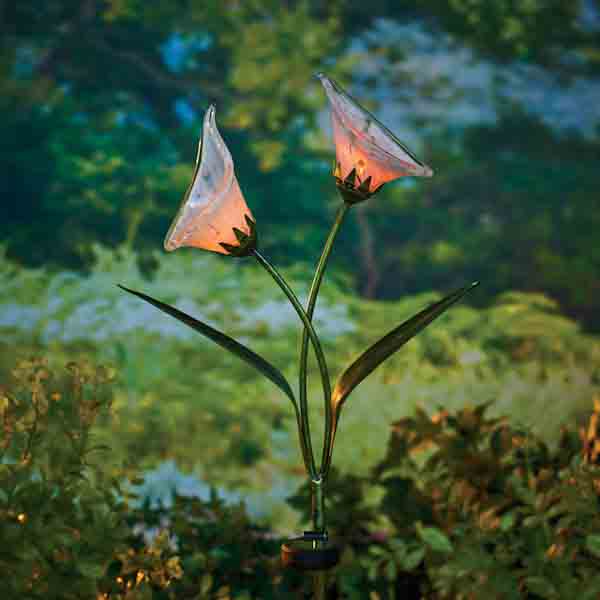
Calla lily efficacy and role
The medicinal value of calla lily
Calla lily is poisonous. It contains a lot of calcium oxalate crystals and alkaloids. Ingestion can cause poisoning symptoms such as coma.The poison of calla lily is tuber, buddha and meat spike, and the inflorescence is poisonous. Chewing a small tuber can cause a sore tongue and throat. The appropriate pounding of fresh calla lily tubers and external applications can treat burns. Contraindications for oral administration. Ingestion of a little bit can cause vomiting, but the boiled leaves can cure minor headaches, but the medicinal use must be used under the guidance of a doctor.
The ornamental value of calla lily
The calla lily is beautiful and elegant, the buds are white, like a horseshoe, the leaves are emerald green, and they are decorated with white spots. The clear calla lotus is a symbol of purity, innocence and simplicity. It has become one of the important types of cut flowers in the international flower market.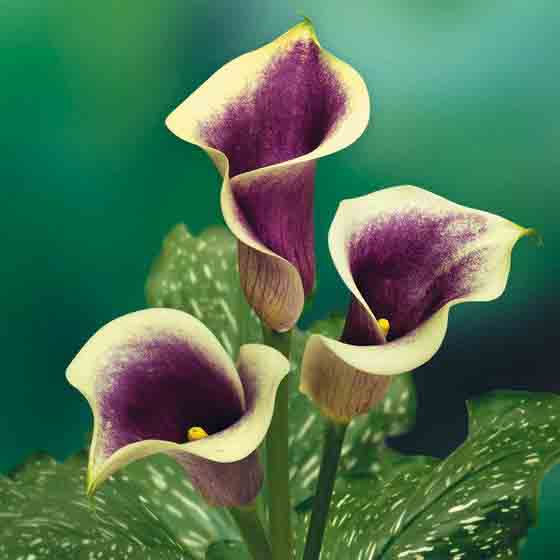
Calla lily growth habit and growing environment and distribution
Calla lilies are distributed in Beijing, Jiangsu, Fujian, Taiwan, Sichuan, Yunnan and Qinling Mountains, and are cultivated for viewing. It is native to northeastern and southern Africa.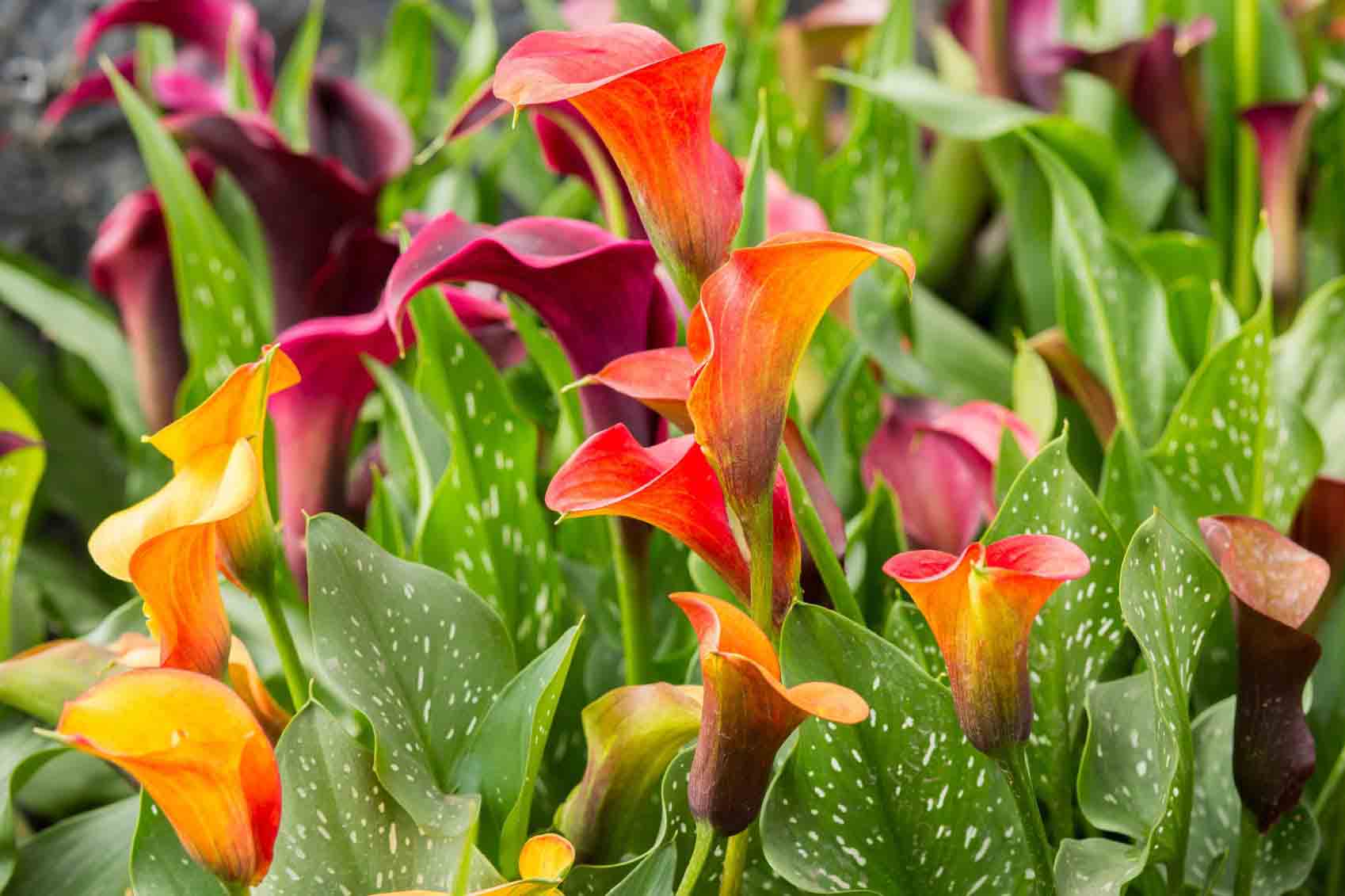
Calla lily cultivation
Potted plants
Calla lily is suitable for planting in earthen pots. You'd better choose fertile, neutral, or acidic soil. You can use 2 parts of finely broken pond soil (or fine clay-sand), 1 part of hummus (or compost), and add an appropriate amount of superphosphate And decomposed human and animal feces, mixed.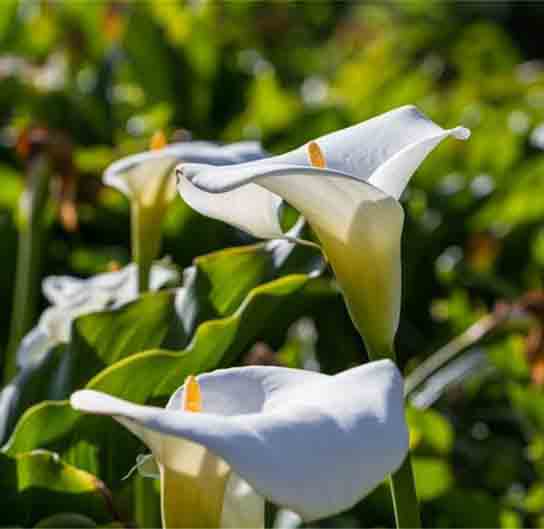
The specific method is: from late June to early August, combined with changing pots, the well-developed large-shaped ramets with roots are broken by hand (preferably without a knife) and planted in the prepared pots. If used as cut flowers, plant 2 to 3 more ramets and place them in a cool place after planting. Using this method to reproduce, it will bloom from September to October that year.
Latest Updated
- Benefits of Bugleweed - 7 Science-backed Health Benefits
- Bugleweed Dangers & Side Effects - Is It Poisonous?
- How to Plant Evergreen Trees - What You Should Know
- When to Plant Evergreens - Grow Guide for Evergreen Trees
- 12 Wonderful Evergreen Shrubs for Your Garden
- 12 Popular Evergreen Plants with Pictures for Beginners
- When And How To Prune A Lilac Bush Like a Pro
- How to Grow & Care for Lilac Vine (Hardenbergia Violacea)
- Japanese Lilac Tree (Syringa Reticulata) Care & Propagation Guide
- Shumard Oak Pros and Cons - What to Know
Popular Articles
- Winter maintenance of Antirrhinum Majus
- How to Grow Terminalia Mantaly Tree
- How to Grow and Care for Crossostephium Chinense
- How to grow Antirrhinum Majus in spring
- Peristeria Elata (Dove Orchid) Profile: Info & Care Guide
- Underwatered Snake Plant (Sansevieria Trifasciata) - Signs And How To Fix
- How to Care for Brazilian Jasmine Plant (Mandevilla Sanderi)
- How to Grow & Care for Graptopetalum Purple Delight in Summer
- Rosa Chinensis (China Rose): Plant Growing & Care Tips
- How to Care for Baby Sun Rose (Aptenia Cordifolia)
